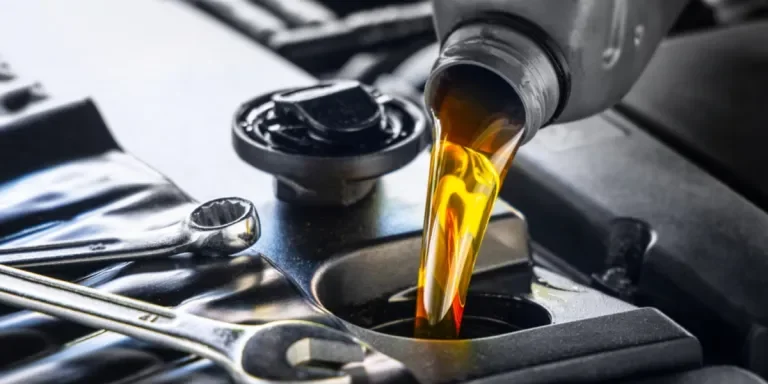If someone had heard years ago that motor oil could be “crafted” in a lab, they might have pictured something out of a science fiction movie. However, synthetic oil has been around since the late 1920s. Back then, it was more of a curiosity than a mainstream option, but circumstances forced the world to pay attention.
During World War II, for instance, Germany couldn’t access enough crude oil, so engineers refined artificial lubricants instead. That necessity led to innovations that paved the way for the synthetic formulas we see on shelves today. By the 1970s, another crisis—the American energy crunch—sparked an even bigger push for fuel efficiency, and that naturally included motor oil research. Automakers needed lubricants to cope with extreme conditions while helping engines get better mileage.
Today, anyone can stroll into their local auto parts store and see rows of full-synthetic, semi-synthetic, and conventional oils, each promising distinct benefits. This article will focus on full synthetic oils and what to consider before selling them.
Table of Contents
Defining “full synthetic”
Why it matters to drivers
The upsides and downsides
4 things to consider before stocking full synthetic oils
1. Viscosity
2. Additives
3. Oil change intervals
4. Considering the vehicle’s age and condition
When changing to full synthetic oil makes the most sense
Rounding up
Defining “full synthetic”

The term “full synthetic” might sound like marketing hype, but it’s grounded in real science. Conventional motor oils come from refining crude petroleum. That’s why you’ll often see references to viscosity modifiers and additives that help the oil cope with temperature extremes. The base is typically distilled from petroleum with synthetics, but the crucial difference is how scientists manipulate the molecular structure to meet specific performance targets.
Here’s the short version: scientists start with high-quality base stock and then engineer it so it’s inherently more stable, less prone to forming deposits, and more resistant to extreme temperatures. Instead of relying heavily on additives, full synthetic oil’s “building blocks” already have the properties drivers want under a hot engine block or a frigid winter morning. Additives still come into play, but the foundation itself is designed to perform at a level conventional oils usually can’t match over time.
Why it matters to drivers
You might think, “All right, it’s neat that scientists can create oil in a lab—but what’s the benefit for consumers?” One of the biggest advantages is that full synthetics hold their viscosity across various conditions. This stability matters because engines endure huge temperature swings, especially if consumers deal with cold starts, high-altitude drives, or stop-and-go traffic on blazing summer days.
Another key point is cleanliness. Synthetic oil is refined precisely, so it contains fewer contaminants. Traditional petroleum-based oils can leave deposits or sludge behind over time, especially if the engine runs hot or drivers stretch their oil change intervals.
With a full synthetic, those unwanted deposits are dramatically reduced. This often translates into a cleaner engine, less wear on critical components, and better overall performance as the miles accumulate.
The upsides and downsides

Still, not everyone automatically opts for full synthetic oil. One obvious drawback is the price tag, which can be higher than conventional oil. Some drivers wonder if that extra cost is worthwhile, especially if they drive gently, at low mileage, or own an older car that’s not particularly sensitive to oil type.
When they consider that synthetics often last longer before they need to change, the gap in cost might not be as wide as it first appears. But if you’re on a budget and your daily drive is a short, easy trip, you might be content with a cheaper conventional or blended option.
There’s also a bit of debate around older engines. Some worry that synthetics can cause leaks in high-mileage vehicles, often because synthetic oils flow more easily through worn seals or gaskets. In many cases, that concern is overblown. Usually, if a seal is on its last leg, drivers would leak no matter which oil they use.
4 things to consider before stocking full synthetic oils
1. Viscosity

Most bottles have “5W-30” or “0W-20” labels. These numbers show how well the oil flows in cold (the number before the “W”) and in heat (the number after). Typically, if customers drive in a place that gets icy winters, they’ll want a low “W” number so that the oil remains fluid and protects the engine during cold starts.
If they’re frequently in scorching climates or towing heavy loads, they’ll pay more attention to the second number, ensuring it’s thick enough to cope with high engine temperatures. Full synthetic oils often excel at both ends of this spectrum, which explains why many modern cars come straight from the factory with 0W-20 or 5W-20 synthetics.
These lower-viscosity formulations reduce internal friction and can boost fuel efficiency. Older car drivers sometimes wonder whether switching to a thinner oil is okay compared to what they’re used to, but the answer is almost always to follow the manufacturer’s recommendation.
2. Additives
Even though full synthetic oil is a big step above conventional in terms of its base quality, that doesn’t mean additives are irrelevant. Detergents, dispersants, and antioxidants still matter here. These compounds help the oil resist oxidation, prevent sludge, and deal with microscopic particles that might otherwise form harmful deposits.
Some premium synthetic brands tout their special blend of additives as a reason to spend more. Whether that’s hype or genuine performance depends on the engine’s needs and how often drivers are willing to change their oil. For example, customers running turbocharged engines or doing a lot of towing will love the extra layers of chemical protection.
But the difference might not be night and day if they’re just taking leisurely drives to a nearby grocery store a few times a week. Then again, even occasional drivers benefit from how well synthetic oil resists degradation over time.
3. Oil change intervals

A big marketing angle for synthetic oil is that consumers can go longer between changes—sometimes up to 10,000 miles or more, depending on the brand and driving habits. Some bottles even boast performance up to 20,000 miles. That’s a staggering figure if users are used to the old rule of thumb about changing conventional oil every 3,000 miles.
The real takeaway is that while full synthetic gives drivers the potential for extended intervals, they should still monitor how the car feels, watch for oil level changes, and do periodic checks to confirm that everything looks and smells right.
4. Considering the vehicle’s age and condition

As mentioned earlier, people with older cars wonder if synthetic oil is too “slick” and might slip through worn seals or cause issues. While full synthetic oil flows more freely than thicker conventional oils, actual leak problems are more about existing engine wear.
If a consumer’s gaskets are ready to crumble, any fluid could highlight that flaw. In many instances, older engines do fine switching to synthetic oil, especially if drivers choose a high-mileage synthetic oil formulated with seal conditioners.
That said, if they have a classic car with specific lubrication needs (or if the manual strongly recommends a particular grade of conventional oil), drivers should maintain the status quo or at least check with a specialist before making the change.
When changing to full synthetic oil makes the most sense
A full synthetic choice shines the brightest if drivers meet at least one of these criteria:
- They have a newer vehicle that specifically calls for synthetic.
- They operate under demanding or varying climate conditions.
- They tow or haul heavy loads or simply want the most advanced protection for their engine.
Enthusiasts who push their cars to the limit also lean heavily toward synthetic since it doesn’t break down as fast under high-rev, high-heat conditions. If, on the other hand, consumers drive a decades-old vehicle primarily around town, they may not see a dramatic difference—aside from knowing the oil’s a bit cleaner and more stable. Many still prefer that extra peace of mind, but it depends on their priorities and finances.
Rounding up
Full synthetic oil wasn’t always the household term it’s become today, but there’s a reason it keeps growing in popularity. Engines are getting more sophisticated, with tighter tolerances, turbochargers, and emission controls that benefit from an oil that can handle stress without giving way to sludge or viscosity loss.
It does come at a higher upfront cost, but many drivers feel the advantages—cleaner internals, better performance under extreme conditions, and potentially fewer oil changes—make it well worth the expense.




